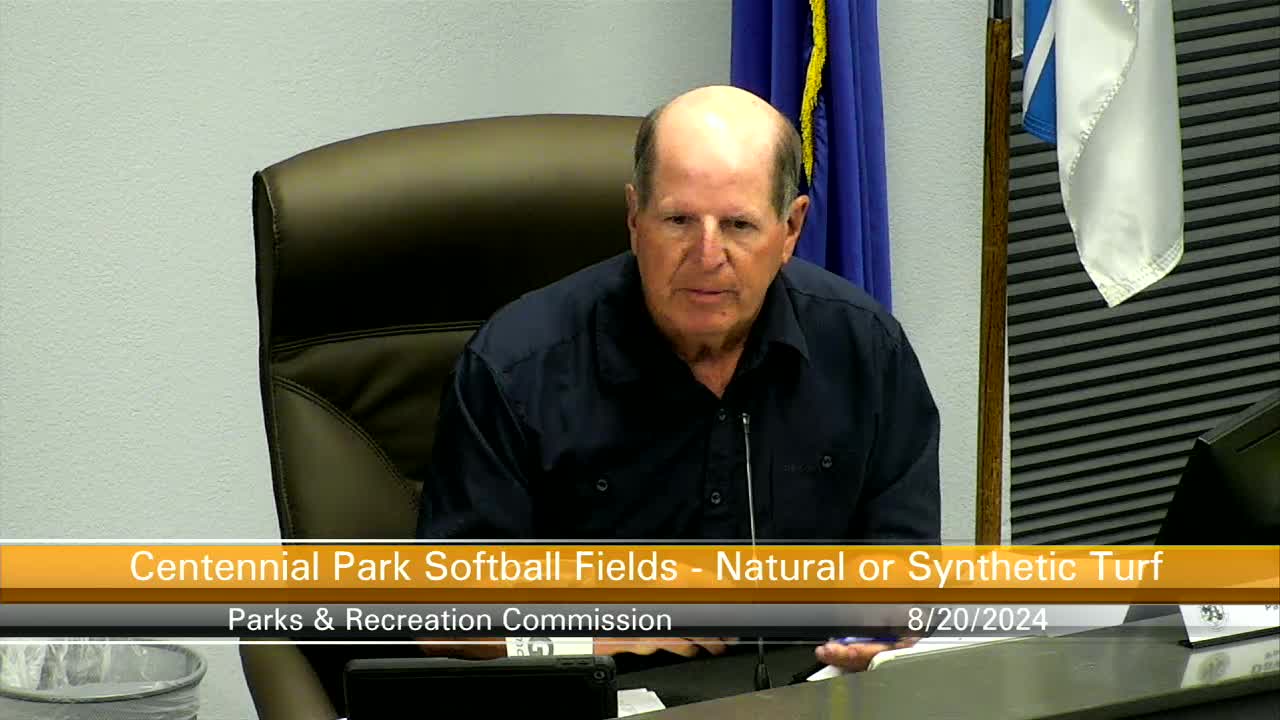Synthetic turf safety concerns spark heated debate
August 20, 2024 | Carson City, Ormsby County, Nevada

This article was created by AI summarizing key points discussed. AI makes mistakes, so for full details and context, please refer to the video of the full meeting. Please report any errors so we can fix them. Report an error »

During a recent government meeting, officials discussed the ongoing concerns surrounding synthetic turf fields, particularly regarding health and environmental impacts. The dialogue was sparked by community apprehensions about the safety of synthetic turf, especially for children who play on these fields.
Diane Baker Roberts, a former athletic director, expressed her concerns about the negative perceptions surrounding synthetic turf, referencing her experience with the installation of turf at Carson High School in 2007, which had not raised health issues at the time. She highlighted the need for clarity on the health concerns being raised by parents, particularly regarding non-players who may be exposed to the turf.
Anthony Stevenson, an expert in the field, provided a comprehensive overview of the current research on synthetic turf. He noted that the industry has faced scrutiny for over two decades, particularly regarding the presence of harmful substances like lead and PFAS (per- and polyfluoroalkyl substances). However, he pointed out that recent studies, including a significant EPA report released in April 2024, found no substantial health risks associated with synthetic turf compared to natural grass fields. The report indicated that users of both types of fields experienced similar levels of polycyclic aromatic hydrocarbons (PAHs), which are hydrocarbons that can be harmful in high concentrations.
Stevenson also addressed the emerging concern of microplastics, which have gained media attention. He emphasized the need for careful interpretation of studies, particularly those that have not undergone peer review. While some studies have detected microplastics in watersheds, Stevenson cautioned against attributing these findings solely to synthetic turf, as the sources of microplastics can be varied.
The discussion also touched on the advancements in synthetic turf technology, which have improved the safety and performance of these fields. Stevenson noted that modern synthetic turf is designed to minimize fiber loss and is now used in high-profile sports venues, indicating a shift in industry standards.
Overall, the meeting underscored the importance of ongoing research and community dialogue regarding synthetic turf, as officials aim to address public concerns while highlighting the advancements and safety measures in place within the industry.
Diane Baker Roberts, a former athletic director, expressed her concerns about the negative perceptions surrounding synthetic turf, referencing her experience with the installation of turf at Carson High School in 2007, which had not raised health issues at the time. She highlighted the need for clarity on the health concerns being raised by parents, particularly regarding non-players who may be exposed to the turf.
Anthony Stevenson, an expert in the field, provided a comprehensive overview of the current research on synthetic turf. He noted that the industry has faced scrutiny for over two decades, particularly regarding the presence of harmful substances like lead and PFAS (per- and polyfluoroalkyl substances). However, he pointed out that recent studies, including a significant EPA report released in April 2024, found no substantial health risks associated with synthetic turf compared to natural grass fields. The report indicated that users of both types of fields experienced similar levels of polycyclic aromatic hydrocarbons (PAHs), which are hydrocarbons that can be harmful in high concentrations.
Stevenson also addressed the emerging concern of microplastics, which have gained media attention. He emphasized the need for careful interpretation of studies, particularly those that have not undergone peer review. While some studies have detected microplastics in watersheds, Stevenson cautioned against attributing these findings solely to synthetic turf, as the sources of microplastics can be varied.
The discussion also touched on the advancements in synthetic turf technology, which have improved the safety and performance of these fields. Stevenson noted that modern synthetic turf is designed to minimize fiber loss and is now used in high-profile sports venues, indicating a shift in industry standards.
Overall, the meeting underscored the importance of ongoing research and community dialogue regarding synthetic turf, as officials aim to address public concerns while highlighting the advancements and safety measures in place within the industry.
View full meeting
This article is based on a recent meeting—watch the full video and explore the complete transcript for deeper insights into the discussion.
View full meeting